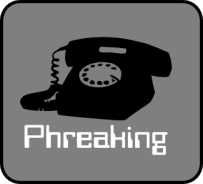What is Hacking? Types of Hackers | Introduction to Cybercrime
- Details
What is Hacking?
Hacking is the activity of identifying weaknesses in a computer system or a network to exploit the security to gain access to personal data or business data. An example of computer hacking can be: using a password cracking algorithm to gain access to a computer system.
Computers have become mandatory to run a successful businesses. It is not enough to have isolated computers systems; they need to be networked to facilitate communication with external businesses. This exposes them to the outside world and hacking. System hacking means using computers to commit fraudulent acts such as fraud, privacy invasion, stealing corporate/personal data, etc. Cyber crimes cost many organizations millions of dollars every year. Businesses need to protect themselves against such attacks.
In this hacking tutorial, we will learn-
- Common Hacking Terminologies
- What is Cyber Crime?
- Types of Cyber Crime
- What is Ethical Hacking?
- Why Ethical Hacking?
- Legality of Ethical Hacking
- Summary
Before we learn hacking, let’s look at the introduction of hacking and some of the most commonly used terminologies in the world of hacking.
Who is a Hacker?
A Hacker is a person who finds and exploits the weakness in computer systems and/or networks to gain access. Hackers are usually skilled computer programmers with knowledge of computer security.
Types of Hackers
Hackers are classified according to the intent of their actions. The following list classifies types of hackers according to their intent:
| Symbol | Description |
|---|---|
 | Ethical Hacker (White hat): A security hacker who gains access to systems with a view to fix the identified weaknesses. They may also perform penetration Testing and vulnerability assessments. |
 | Cracker (Black hat): A hacker who gains unauthorized access to computer systems for personal gain. The intent is usually to steal corporate data, violate privacy rights, transfer funds from bank accounts etc. |
 | Grey hat: A hacker who is in between ethical and black hat hackers. He/she breaks into computer systems without authority with a view to identify weaknesses and reveal them to the system owner. |
 | Script kiddies: A non-skilled person who gains access to computer systems using already made tools. |
 | Hacktivist: A hacker who use hacking to send social, religious, and political, etc. messages. This is usually done by hijacking websites and leaving the message on the hijacked website. |
 | Phreaker: A hacker who identifies and exploits weaknesses in telephones instead of computers. |
Introduction of Cybercrime
Cybercrime is the activity of using computers and networks to perform illegal activities like spreading computer viruses, online bullying, performing unauthorized electronic fund transfers, etc. Most cybercrime hacks are committed through the internet, and some cybercrimes are performed using Mobile phones via SMS and online chatting applications.
Type of Cybercrime
- The following list presents the common types of cybercrimes:
- Computer Fraud: Intentional deception for personal gain via the use of computer systems.
- Privacy violation: Exposing personal information such as email addresses, phone number, account details, etc. on social media, hacking a websites, etc.
- Identity Theft: Stealing personal information from somebody and impersonating that person.
- Sharing copyrighted files/information: This involves distributing copyright protected files such as eBooks and computer programs etc.
- Electronic funds transfer: This involves gaining an un-authorized access to bank computer networks and making illegal fund transfers.
- Electronic money laundering: This involves the use of the computer to launder money.
- ATM Fraud: This involves intercepting ATM card details such as account number and PIN numbers. These details are then used to withdraw funds from the intercepted accounts.
- Denial of Service Attacks: This involves the use of computers in multiple locations to attack servers with a view of shutting them down.
- Spam: Sending unauthorized emails. These emails usually contain advertisements.
What is Ethical Hacking?
Ethical Hacking is identifying weakness in computer systems and/or computer networks and coming with countermeasures that protect the weaknesses. Ethical hackers must abide by the following rules.
- Get written permission from the owner of the computer system and/or computer network before hacking.
- Protect the privacy of the organization been hacked.
- Transparently report all the identified weaknesses in the computer system to the organization.
- Inform hardware and software vendors of the identified weaknesses.
Why Ethical Hacking?
- Information is one of the most valuable assets of an organization. Keeping information secure can protect an organization’s image and save an organization a lot of money.
- Fake hacking can lead to loss of business for organizations that deal in finance such as PayPal. Ethical hacking puts them a step ahead of the cyber criminals who would otherwise lead to loss of business.
Legality of Ethical Hacking
Ethical Hacking is legal if the hacker abides by the rules stipulated in the above section on the definition of ethical hacking. The International Council of E-Commerce Consultants (EC-Council) provides a certification program that tests individual’s skills. Those who pass the examination are awarded with certificates. The certificates are supposed to be renewed after some time.
Summary
- Hacking is identifying and exploiting weaknesses in computer systems and/or computer networks.
- Cybercrime is committing a crime with the aid of computers and information technology infrastructure.
- Ethical Hacking is about improving the security of computer systems and/or computer networks.
- Ethical Hacking is legal.
